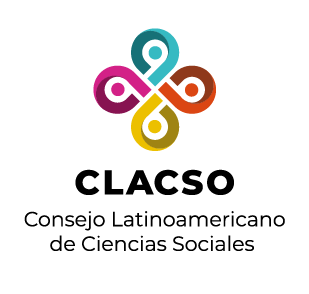Red de Bibliotecas Virtuales de Ciencias Sociales en
América Latina y el Caribe

Por favor, use este identificador para citar o enlazar este ítem:
https://biblioteca-repositorio.clacso.edu.ar/handle/CLACSO/48747Registro completo de metadatos
| Campo DC | Valor | Lengua/Idioma |
|---|---|---|
| dc.creator | Weldon, Rebecca | - |
| dc.date | 2010-10-25 | - |
| dc.date.accessioned | 2022-03-17T17:46:39Z | - |
| dc.date.available | 2022-03-17T17:46:39Z | - |
| dc.identifier | https://revistas.ulusofona.pt/index.php/cadernosociomuseologia/article/view/1635 | - |
| dc.identifier.uri | http://biblioteca-repositorio.clacso.edu.ar/handle/CLACSO/48747 | - |
| dc.description | Rebecca Weldon “…we have to take into account the fact that museology and museums are two completely different things.” Martin R. Shärer[1] In the 20th century, growing populations produced a growing body of heritage. The transmission of this heritage to succeeding generations coalesced into three major modern institutions: universities, library/archives and museums. Traditional systems of social and cultural memory had become overloaded and therefore evolved conceptually. This evolution took place within the primary context of a naturally occurring museology through the process I call museogenesis. The term museogenesis refers to the origin and development of museological thought in a specific cultural context. By museological thought, I refer to ideas and theories surrounding the parameters of “the natural and cultural heritage, the activities concerned with the preservation and communication of this heritage, the institutional frame-work, and society as a whole” (Mensch 1992). This broadly inclusive definition relates museology to another broadly defined concept: cultural context. By cultural context, I refer to the “webs of significance and systems of meaning which is the collective property of a group” (Geertz 1973). [1] ICOFOM Study Series – ISS 34, 2003, ISS 34_03.pdf, p.7 | pt-PT |
| dc.format | application/pdf | - |
| dc.language | por | - |
| dc.publisher | Edições Universitárias Lusófonas | pt-PT |
| dc.relation | https://revistas.ulusofona.pt/index.php/cadernosociomuseologia/article/view/1635/1301 | - |
| dc.source | Cadernos de Sociomuseologia; No. 37 (2010): To understand New Museology in the 21st Century | en-US |
| dc.source | Cadernos de Sociomuseologia; n. 37 (2010): To understand New Museology in the 21st Century | pt-PT |
| dc.source | 1646-3714 | - |
| dc.source | 1646-3706 | - |
| dc.title | Transformative Museology | pt-PT |
| dc.type | info:eu-repo/semantics/article | - |
| dc.type | info:eu-repo/semantics/publishedVersion | - |
| Aparece en las colecciones: | Centro de Estudos Interdisciplinares em Educação e Desenvolvimento da Universidade Lusófona de Humanidades e Tecnologia - CeiED/ULHT - Cosecha | |
Ficheros en este ítem:
No hay ficheros asociados a este ítem.
Los ítems de DSpace están protegidos por copyright, con todos los derechos reservados, a menos que se indique lo contrario.